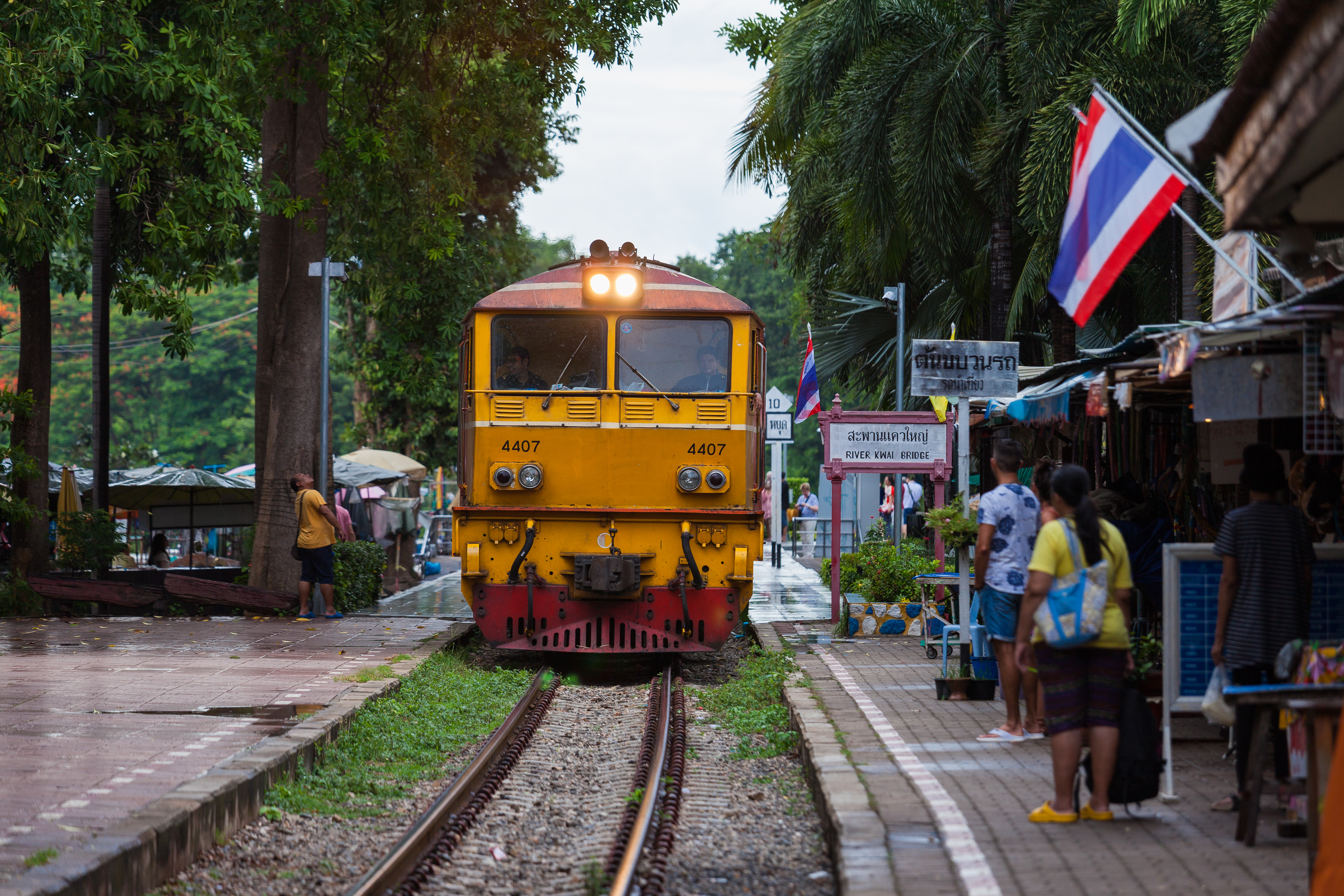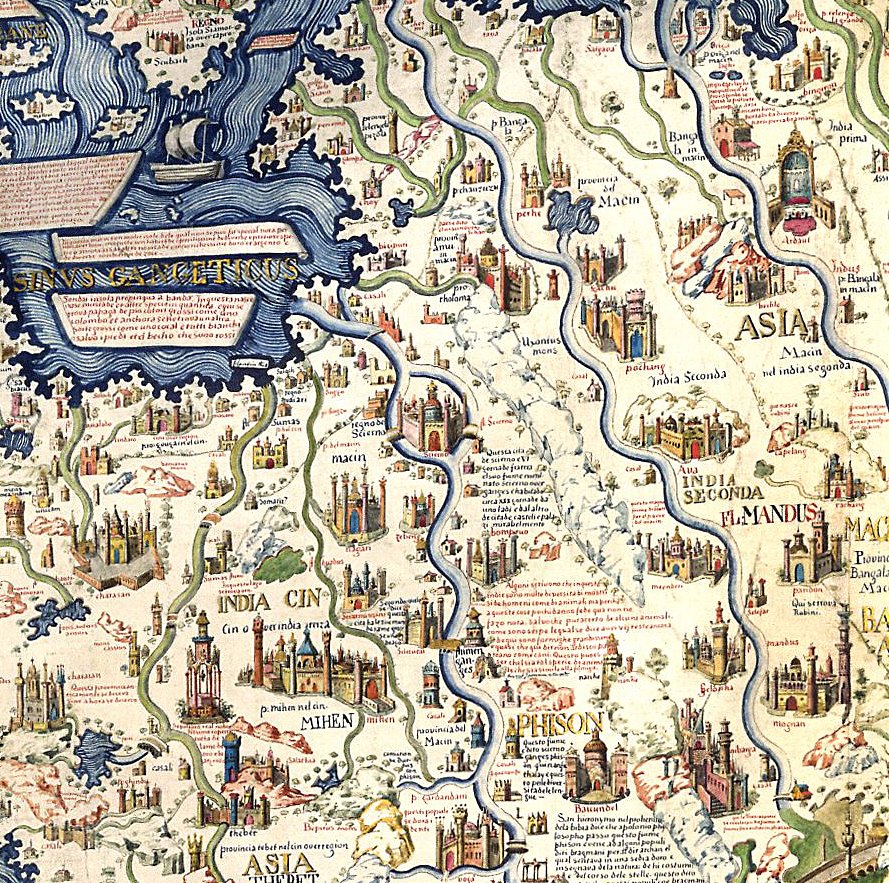|
Rail Transport In Thailand
The railway network of Thailand is managed and operated by the State Railway of Thailand (SRT) and has a route length of 4,346 km (2,700 mi). 151 km (94 mi) or 3.47% of all the routes are electrified. History Interest in rail transport in Siam can be traced to when King Rama IV was given a gift of a model railway from Queen Victoria in 1855. The first railway line, 20 km in length, named the Paknam Railway between Bangkok– Samut Prakan began construction in July 1891 under a 50-year concession with a Danish company. Paknam Railway opened in 1894. This railway line was electrified in 1925, made it into the second electric railway service of Southeast Asia after Dutch East Indies (now known as Indonesia). This railway line was decommissioned on 1 January 1959. Royal State Railways of Siam (RSR) was found in 1890 at the same time with a construction of the Bangkok- Ayutthaya railway (), the first part of the Northern Line, was started in 1891 and opene ... [...More Info...] [...Related Items...] OR: [Wikipedia] [Google] [Baidu] |
River Kwai Bridge Railway Station
A river is a natural flowing watercourse, usually freshwater, flowing towards an ocean, sea, lake or another river. In some cases, a river flows into the ground and becomes dry at the end of its course without reaching another body of water. Small rivers can be referred to using names such as Stream#Creek, creek, Stream#Brook, brook, rivulet, and rill. There are no official definitions for the generic term river as applied to Geographical feature, geographic features, although in some countries or communities a stream is defined by its size. Many names for small rivers are specific to geographic location; examples are "run" in some parts of the United States, "Burn (landform), burn" in Scotland and northeast England, and "beck" in northern England. Sometimes a river is defined as being larger than a creek, but not always: the language is vague. Rivers are part of the water cycle. Water generally collects in a river from Precipitation (meteorology), precipitation through a ... [...More Info...] [...Related Items...] OR: [Wikipedia] [Google] [Baidu] |
Thailand
Thailand ( ), historically known as Siam () and officially the Kingdom of Thailand, is a country in Southeast Asia, located at the centre of the Indochinese Peninsula, spanning , with a population of almost 70 million. The country is bordered to the north by Myanmar and Laos, to the east by Laos and Cambodia, to the south by the Gulf of Thailand and Malaysia, and to the west by the Andaman Sea and the extremity of Myanmar. Thailand also shares maritime borders with Vietnam to the southeast, and Indonesia and India to the southwest. Bangkok is the nation's capital and largest city. Tai peoples migrated from southwestern China to mainland Southeast Asia from the 11th century. Indianised kingdoms such as the Mon, Khmer Empire and Malay states ruled the region, competing with Thai states such as the Kingdoms of Ngoenyang, Sukhothai, Lan Na and Ayutthaya, which also rivalled each other. European contact began in 1511 with a Portuguese diplomatic mission to Ayutthaya, w ... [...More Info...] [...Related Items...] OR: [Wikipedia] [Google] [Baidu] |
Prayut Chan-o-cha
Prayut Chan-o-cha (sometimes spelled Prayuth Chan-ocha; th, ประยุทธ์ จันทร์โอชา, ; born 21 March 1954) is a Thai politician and retired Royal Thai Army, army officer who has served as the Prime Minister of Thailand since he seized power in a military coup in 2014. He is concurrently the List of Defence Ministers of Thailand, Minister of Defence, a position he has held in his own government since 2019. Prayut served as List of commanders-in-chief of the Royal Thai Army, Commander in Chief of Royal Thai Army from 2010 to 2014 and led the 2014 Thai coup d'état which installed the National Council for Peace and Order (NCPO), the military junta which governed Thailand between 22 May 2014 and 10 July 2019. After his appointment as army chief in 2010, Prayut was characterised as a royalist and an opponent of former prime minister Thaksin Shinawatra. Considered a hardliner within the military, he was one of the leading proponents of military crackdo ... [...More Info...] [...Related Items...] OR: [Wikipedia] [Google] [Baidu] |
Gauge Conversion
Gauge conversion is the changing of one railway track gauge (the distance between the running rails) to another. Sleepers If tracks are converted to a narrower gauge, the existing sleepers (ties) may be used. However, replacement is required if the conversion is to a wider gauge. Some sleepers may be long enough to accommodate the fittings of both existing and alternative gauges. Wooden sleepers are suitable for conversion because they can be drilled for the repositioned rail spikes. Being difficult to drill, concrete sleepers are less suitable for conversion. Concrete sleepers may be cast with alternative gauge fittings in place, an example being those used during the conversion of the Melbourne–Adelaide railway from to . Steel sleepers may have alternative gauge fittings cast at production, may be drilled for new fittings or may be welded with new fittings. Structures Conversion from a narrow to a wider gauge may require enlargement of the structure gauge of the bridges, ... [...More Info...] [...Related Items...] OR: [Wikipedia] [Google] [Baidu] |
Metre Gauge
Metre-gauge railways are narrow-gauge railways with track gauge of or 1 metre. The metre gauge is used in around of tracks around the world. It was used by European colonial powers, such as the French, British and German Empires. In Europe, large metre-gauge networks remain in use in Switzerland, Spain and many European towns with urban trams, but most metre-gauge local railways in France, Germany and Belgium closed down in the mid-20th century, although many still remain. With the revival of urban rail transport, metre-gauge light metros were established in some cities, and in other cities, metre gauge was replaced by standard gauge. The slightly-wider gauge is used in Sofia. Examples of metre-gauge See also * Italian metre gauge * Narrow-gauge railways A narrow-gauge railway (narrow-gauge railroad in the US) is a railway with a track gauge narrower than standard . Most narrow-gauge railways are between and . Since narrow-gauge railways are usually built with ... [...More Info...] [...Related Items...] OR: [Wikipedia] [Google] [Baidu] |
Standard Gauge
A standard-gauge railway is a railway with a track gauge of . The standard gauge is also called Stephenson gauge (after George Stephenson), International gauge, UIC gauge, uniform gauge, normal gauge and European gauge in Europe, and SGR in East Africa. It is the most widely used track gauge around the world, with approximately 55% of the lines in the world using it. All high-speed rail lines use standard gauge except those in Russia, Finland, and Uzbekistan. The distance between the inside edges of the rails is defined to be 1435 mm except in the United States and on some heritage British lines, where it is defined in U.S. customary/Imperial units as exactly "four feet eight and one half inches" which is equivalent to 1435.1mm. History As railways developed and expanded, one of the key issues was the track gauge (the distance, or width, between the inner sides of the rails) to be used. Different railways used different gauges, and where rails of different gauge met – ... [...More Info...] [...Related Items...] OR: [Wikipedia] [Google] [Baidu] |
Phetchaburi
Phetchaburi ( th, เพชรบุรี, ) or Phet Buri () is a town (''thesaban mueang'') in southern Thailand, capital of Phetchaburi Province. In Thai, Phetchaburi means "city of diamonds" (''buri'' meaning "city" in Sanskrit). It is approximately 160 km south of Bangkok, at the northern end of the Thai peninsula. As of 2005, the town had a population of 26,181 and covers the two ''tambon'' Tha Rap and Khlong Krachaeng. The runs through the middle of the city. The region is mostly flat, save for a single hill (called ''Khao Wang'') on the outskirts of town. The royal palace named |
Thonburi
__NOTOC__ Thonburi ( th, ธนบุรี) is an area of modern Bangkok. During the era of the Kingdom of Ayutthaya, its location on the right (west) bank at the mouth of the Chao Phraya River had made it an important garrison town, which is reflected in its name: ''thon'' () a loanword from Pali ''dhána'' wealth and ''buri'' (), from ''púra'' fortress. The full formal name was Thon Buri Si Mahasamut ( 'City of Treasures Gracing the Ocean'). For the informal name, see the history of Bangkok under Ayutthaya. In 1767, after the sack of Ayutthaya by the Burmese, General Taksin took back Thonburi and, by right of conquest, made it the capital of the Thonburi Kingdom, with himself crown king until 6 April 1782, when he was deposed. Rama I, the newly enthroned king, moved the capital across the river, where stakes driven into the soil of Bangkok for the City Pillar at 06:45 on 21 April 1782, marking the official founding of the new capital. Thonburi remained an independent tow ... [...More Info...] [...Related Items...] OR: [Wikipedia] [Google] [Baidu] |
Ayutthaya (city)
Phra Nakhon Si Ayutthaya ( th, พระนครศรีอยุธยา, ; also spelled "Ayudhya"), or locally and simply Ayutthaya, is the former capital of Phra Nakhon Si Ayutthaya province in Thailand. Located on an island at the confluence of the Chao Phraya and Pa Sak rivers, Ayutthaya is the birthplace of the founder of Bangkok, King Rama I. Etymology Ayutthaya is named after the city of Ayodhya in India, the birthplace of Rama in the ''Ramayana'' (Thai, ''Ramakien''); (from Khmer: ''preah'' ព្រះ ) is a prefix for a noun concerning a royal person; designates an important or capital city (from Sanskrit: ''nagara''); the Thai honorific ''sri'' or ''si'' is from the Indian term of veneration Shri. History Prior to Ayutthaya's traditional founding date, archaeological and written evidence has revealed that Ayutthaya may have existed as early as the late 13th century as a water-borne port town. Further evidence of this can be seen with Wat Phanan Choeng, w ... [...More Info...] [...Related Items...] OR: [Wikipedia] [Google] [Baidu] |
Bangkok
Bangkok, officially known in Thai language, Thai as Krung Thep Maha Nakhon and colloquially as Krung Thep, is the capital and most populous city of Thailand. The city occupies in the Chao Phraya River delta in central Thailand and has an estimated population of 10.539 million as of 2020, 15.3 percent of the country's population. Over 14 million people (22.2 percent) lived within the surrounding Bangkok Metropolitan Region at the 2010 census, making Bangkok an extreme primate city, dwarfing Thailand's other urban centres in both size and importance to the national economy. Bangkok traces its roots to a small trading post during the Ayutthaya Kingdom in the 15th century, which eventually grew and became the site of two capital cities, Thonburi Kingdom, Thonburi in 1768 and Rattanakosin Kingdom (1782–1932), Rattanakosin in 1782. Bangkok was at the heart of the modernization of Siam, later renamed Thailand, during the late-19th century, as the country faced pressures from the ... [...More Info...] [...Related Items...] OR: [Wikipedia] [Google] [Baidu] |




.jpg)